Today was Juneteenth, a new US holiday that came into place recently to commemorate the ending of slavery in the US.
We had an early morning start – taking an Uber to a boat station to catch a boat. In Boston, there is the MBTA (Massachusetts Bay Transportation Authority), which runs the public transit system – also known as the ’T’ – and provides rail, bus, and ferry services. The Uber driver took a slightly different route from what Uber suggested, and I wondered if he was heading in the right direction. He stopped just past a signal and told us the station was across the footpath. When going to new locations, you tend to have this fear when the cab takes a different route – my fear was us missing the boat! Unfounded fear, it turned out to be.
The boat was already there waiting, almost ready to go in a couple of minutes, and the staff standing on the ramp asked us for our tickets – they told us the MBTA app could be used, or we could get tickets from the counter. But since I already had the app for my train rides, I got 3 tickets for the ferry. The app allows you to buy the ticket in advance but activate it during your ride.
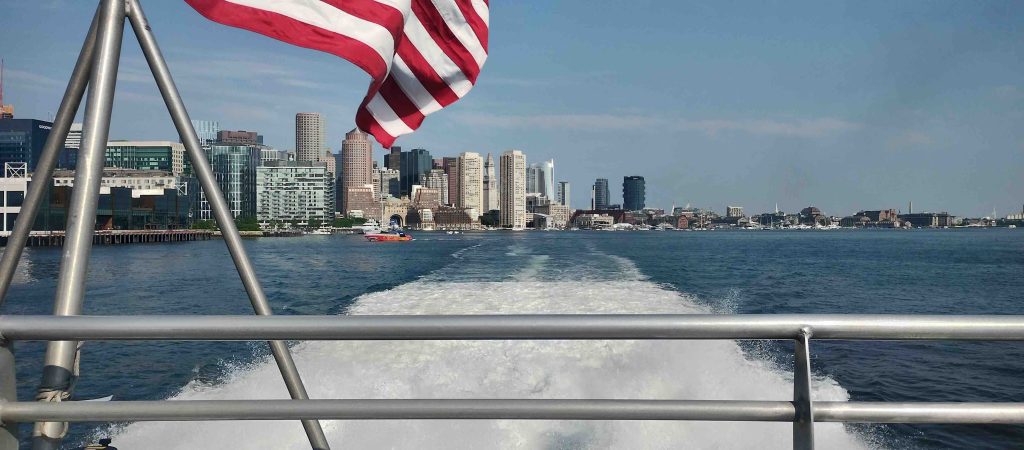
It was a pleasant 30-minute ride – motoring along the Massachusetts Bay southwards (this bay is part of the Atlantic Ocean). I haven’t done boat rides on the ocean, so this was fun – an endless stretch of water. We reached the Hingham Terminal, and just like a car parking facility, this was an area for parking boats – there were plenty of private boats (Hingham is a town in the state of Massachusetts). We picked some snacks from a supermarket for our boat ride – a few cut fruits (muskmelons) and trail nuts – yeah, all healthy items, and since we were travelling with Rob, it was apt. We then drove via another town called Cohasset to Scituate.
Boat parking
Rob had a boat that was parked in a facility over here. There are multiple such facilities in these seaport towns that have parking spots for a fee. You have a couple of options – you can get a dock, which is sort of a proper structure beside the coast where you leave your boat, or you pick a mooring which is not near the coast but a buoy a little further out in the waters to which you anchor your boat. Each has pros and cons – cost, convenience of easily getting out into the waters, parking etc. And it’s not easy getting a spot since there is a lot of demand for it.
The drawback of a mooring is that since it is further out in the waters, you need to get a ride on another boat to take you to your boat. There is typically a service provided in these facilities for that – sort of like a short ride-sharing boat taxi service – we hopped into one, and the lady manning the boat took us to Rob’s boat after dropping off a couple of other folks in their boats on the way. Pretty fascinating watching how this whole setup operates – I’ve never seen one back home.
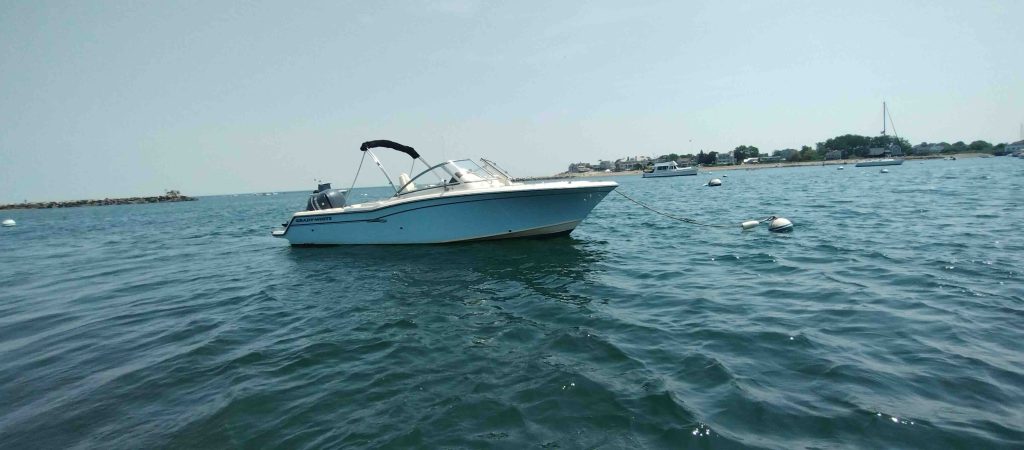
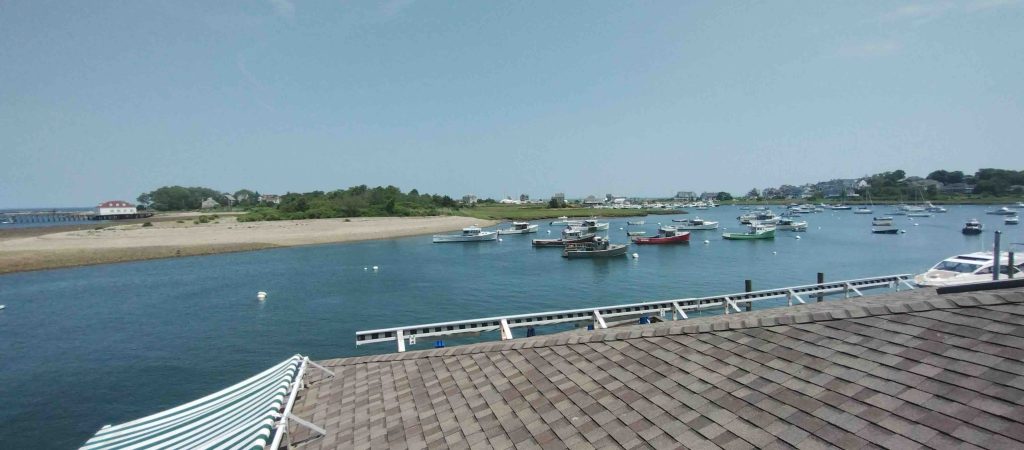
We soon reached our boat – a Grady-White boat; Rob briefed us about the company and said that their boats are designed such that even if the water came on the deck, the boat wouldn’t sink. Depending on their size, different boats have different motors/engines for propelling the boat; each engine has propellers at the bottom. Rob’s boat had a single Yamaha engine. Our boat was like a convertible – since it was a hot sunny day, we opened out the convertible shade to provide us with some sunshade. When the boat is not in motion (i.e., docked), the engine is lifted so that the propellor stays above the water to avoid the effect of salt water damaging the engine. When driving, we lower the engine so the propeller is in the water and start the boat.
If you are curious to learn about these boats, the Grady-White company has some boat tutorials: https://www.gradywhite.com/explore/the-grady-life/videos/?filter=9720
After putting up the shade, Rob explained a few other things about the boat. It was fascinating that they had found a way to construct a restroom inside – you wouldn’t even guess there was one even after stepping on the boat. But there it was, in what seemed like a small door to a cabinet – but instead of a cabinet, it was a little restroom down below.
There were seats to sit just next to the driver(driver’s seat was sort of in the middle on the right side), as well as behind the driver (the back is called the ‘stern’). Also, in front (the area called the ‘bow’ of the boat), there were seats available. Six people could comfortably fit on the boat without feeling congested.
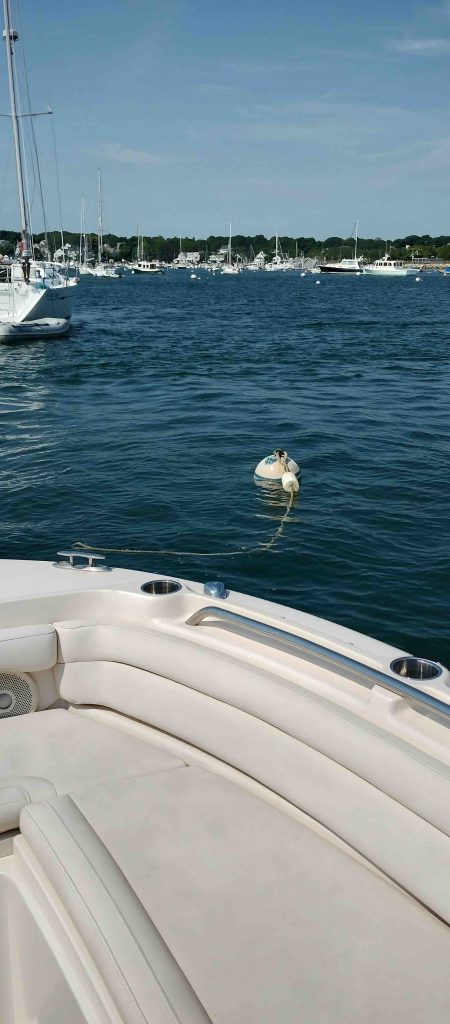
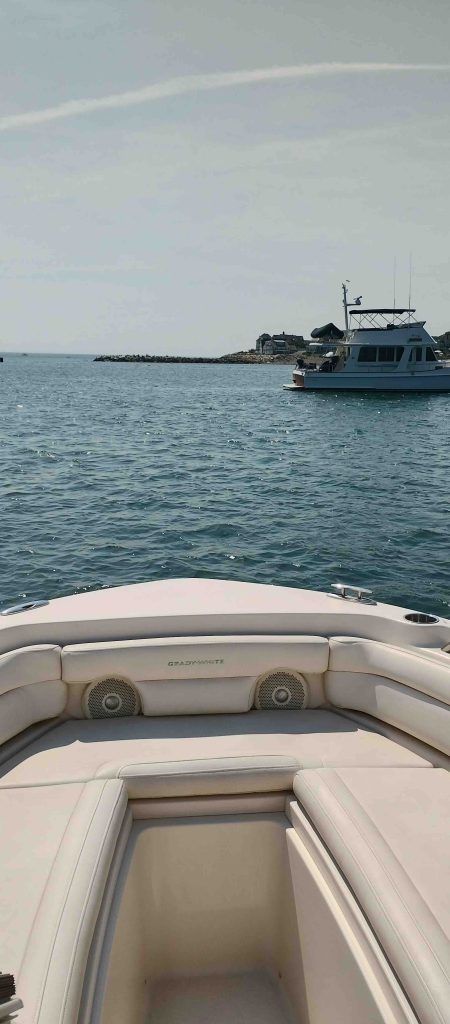
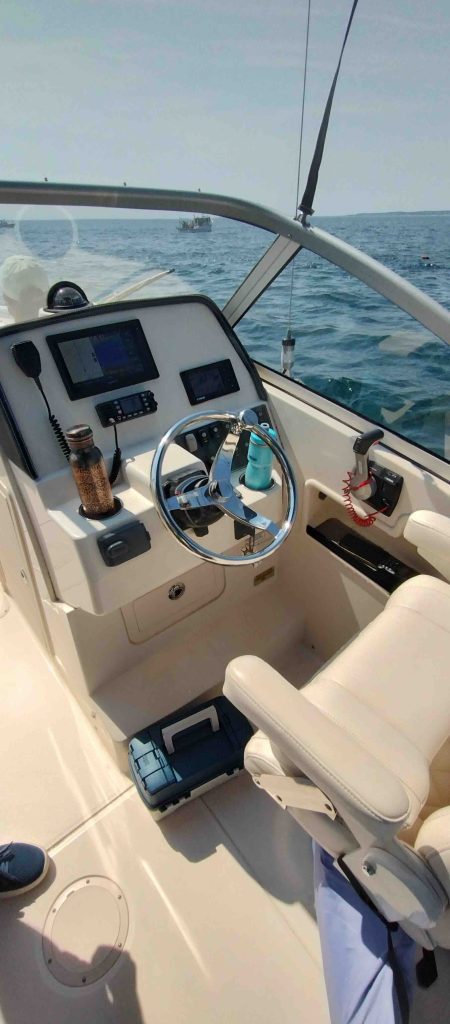
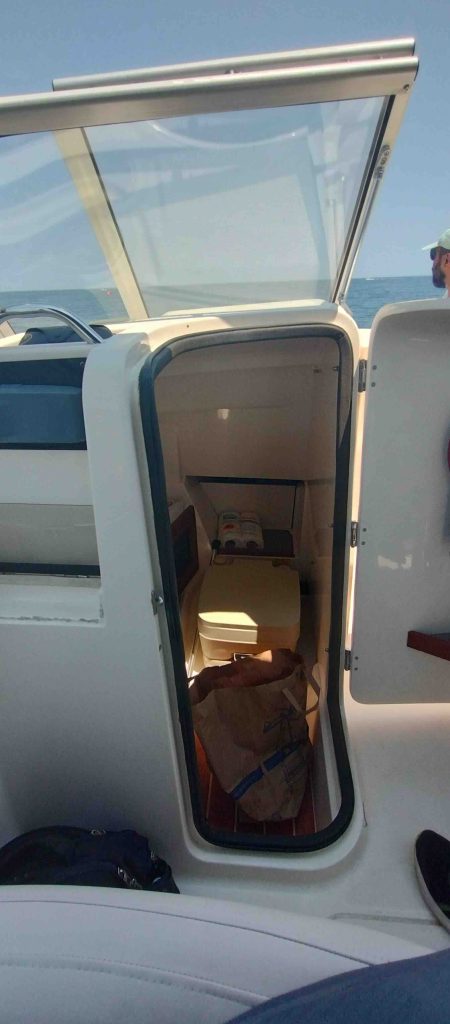
The calm in the ocean
We were soon zipping away with the boat rocking along small waves on the ocean. Rob went on top speed and then shut off the engine at a point when he asked if we wanted to go fishing. He showed us the equipment used for fishing – the rod, the fishing line, the hook, the sinker dead weight and the fishing reel to let the line go further down in the water or to reel the line back in. The dead weight at the end of the line makes it easy for us to launch the fishing line in a particular direction and also helps take the line into the water. The hooks are pretty sharp in differing sizes, and Rob warned us to be careful when handling them.
There is something about sitting in the middle of the ocean with the engines turned off – the noise you hear is just that of the water, and the sights you see are just small waves all around you and the sky on top – occasionally, there may be another boat passing by, but most of the time, there’s no one else around. Seemed like a nice getaway from the city – come to the middle of the ocean, read a book, listen to music or just do nothing but watch the waters.
2 replies on “USA Part 6 – Boating into the ocean”
A Grady White is a good boat. Assuming Robs boat is around a 20’ footer since everyone sat comfortably. A little tight if all of you were fishing. Did u catch a fish? The town I leave in has 2 harbors, one of which takes 20+ years to get a mooring spot. There are multiple Yatch clubs here and people use theirs services to get to the boats or they can use the harbor taxi too. Some people kayak or paddle to get to their boats. What a fun experience you had, SS. Thanks for sharing. Natalia Doron
No luck with fish 🙂